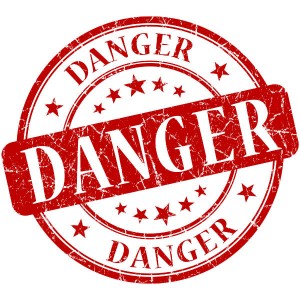Mold in Chimney
Any trapped moisture in your home could be growing mold and deteriorating the quality of air in your home. Any mold growing in your home is serious and should be detected and removed immediately. Mold can produce respiratory problems and even some long term health effects. One of the biggest reasons for moisture or water entering the home is the most exposed to the elements structure in your home – your chimney.
Detecting Mold
Mold is usually detected first by discoloration of ceilings and walls and can vary in color from white, black, or green. Fungi spores will also have a musty odor that is quite unpleasant. Cracks in paint or peeling might also appear around walls where mold is present. A white crystal like powder substance might also appear on bricks or mortar that does not give off an odor that is called efflorescence. Although this substance is NOT mold and mostly harmless, it IS and indicator of water leaks. If any discoloration around the mortar and bricks of the chimney, an inspection is recommended by a chimney professional, especially if water leaks or mold are suspected.
Mold and Health Problems
Exposure to mold can cause serious health problems including respiratory problems as well as nasal and sinus congestion. In a few instances, some might have allergic reaction to mold that results in headaches, cough, and irritation from the skin or throat. These symptoms might be an indicator of mold in the home if not already detected. Seek a physician immediately if any negative reactions to exposure to mold occur.
Causes of Mold
Trapped moisture is always the cause of growing mold, but the million dollar question is where is the moisture getting in? It is not always easy to detect, but water always follows the path of least resistance. Professionals look for cracks, and a popular area for water to leak in is the flashing or area where the chimney is attached to the roof. Weathering and exposure to the elements of rain and snow can cause the flashing to develop cracks creating an area for moisture to get in the home. Whatever the reason, trapped moisture can cause mold to spread to the walls and ceilings, where it is the most difficult to treat and clean up.
Cleaning Up Mold
Cleaning mold is a dangerous job because of the risk of exposure to the toxic mold spores and should be done by a professional or with the utmost protection from skin, eyes, and lungs. Detection and fixing of the leak where the water is entering the home should be done first before cleaning mold. Making sure there are no leaks ensures clean up will only have to be done once. Water and a non-ammonia soap or detergent is all that is required to clean mold. After cleaning, the area should also be treated with a mild solution of water and bleach to completely disinfect the area.
Preventing Mold
In most cases, if a leak is fixed mold will stop growing. Keeping a dry home within 40-60 percent also keeps any type of mold growing. This can be done by using dehumidifiers if necessary in higher humidity climates. Never use carpet in bathrooms or basements and use mold repellent paint.
Keeping you home free from mold will keep you and your family healthy as well as protect your house for many years.

